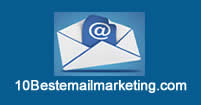Introduction
In today's digital age, email marketing remains one of the most effective ways to engage with customers and drive conversions. However, with inboxes inundated with countless messages every day, it can be challenging to capture your audience's attention and make your email campaign stand out. This is where segmentation comes into play. By dividing your subscriber list into smaller, targeted groups based on specific criteria, you can create personalized and highly effective email campaigns that resonate with your audience. In this article, we will explore the benefits of using segmentation to optimize your email campaigns and provide practical tips for implementing this strategy successfully.
The Power of Segmentation
Segmentation is the process of dividing your email subscriber list into distinct groups based on various factors, such as demographics, purchase history, behavior, or preferences. The key idea is that not all subscribers are the same, and by tailoring your email content to specific segments, you can deliver more relevant and meaningful messages. Here's why segmentation is essential for optimizing your email campaigns:
- Increased Relevance: Sending personalized emails to segmented groups ensures that your content resonates with their specific interests and needs. This relevance translates into higher open rates, click-through rates, and ultimately, conversions.
- Improved Engagement: When subscribers receive emails that address their specific pain points or interests, they are more likely to engage with the content and take the desired action. Segmentation helps you deliver targeted messages that speak directly to each group's unique needs and motivations.
- Higher Conversion Rates: By hyper-targeting your email campaigns, you can deliver highly relevant offers or promotions tailored to each segment's preferences. This level of personalization can significantly boost your conversion rates and drive more revenue for your business.
Implementing Segmentation: Best Practices
Now that you understand the benefits of segmentation let's explore some best practices for implementing this strategy effectively:
1. Collect Relevant Data
To segment your subscriber list effectively, you need to collect relevant data. This could include information such as age, location, buying history, engagement with previous campaigns, or preferences stated explicitly by the subscribers themselves. The more data you gather, the more granular and personalized your segments can be.
2. Define Your Segments
Once you have collected the necessary data, you can start creating segments based on specific criteria. For example, you might create segments for new subscribers, loyal customers, or those who have shown interest in a particular product category. Define your segments based on what is most relevant to your business and aligns with your overall marketing goals.
3. Craft Tailored Messages
Once your segments are defined, it's time to create email content that speaks directly to each group's unique interests and preferences. Tailor your messages to address the pain points, desires, or goals of each segment. This might involve customizing the email subject lines, message content, or even the offers you present to each group.
4. Test and Refine
Segmentation is not a one-time task. To ensure optimal results, you need to continually test and refine your segments and the corresponding email content. Pay attention to the metrics of each segmented campaign, such as open rates, click-through rates, and conversions. Use this data to identify areas for improvement and iterate on your segmentation strategy accordingly.
Conclusion
Segmentation is a powerful tool that can significantly improve the effectiveness of your email campaigns. By dividing your subscriber list into targeted segments and delivering personalized messages, you can increase relevance, engagement, and conversion rates. Remember to collect relevant data, define your segments thoughtfully, craft tailored messages, and continuously test and refine your approach. With segmentation as part of your email marketing strategy, you can maximize the impact of your campaigns and achieve better results for your business.
